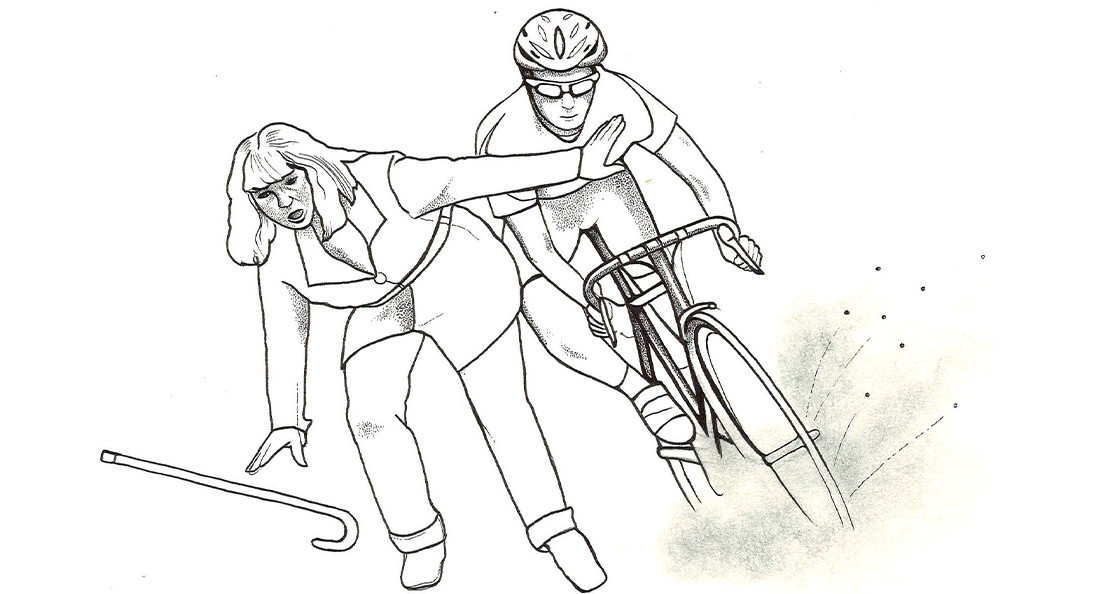Losing traction
When cyclists make sidewalks unsafe
Many Winnipeggers took up active forms of transit last year, including walking and cycling. This is an incredibly positive transition, but with the increase in cycling, sidewalk traffic has become more dangerous. Many cyclists act dangerously and selfishly, travelling at fast speeds, taking up large portions of the sidewalk and putting many disabled people like me at risk of collision and injury.
Last summer, Ross Eadie, a blind city councillor, had his white cane broken by a cyclist, who barely missed Eadie himself. The cyclist likely assumed Eadie could move out of the way in time. Many people with blindness, reduced vision or mobility lack the reaction time to respond to this kind of selfish behaviour.
I’m missing a quarter of my vision. I often walk into trees, doorways and the occasional street sign, but I can see what’s right in front of me and have become quite adept at dodging still objects that appear in the centre of my vision as I move toward them. When cyclists appear out of my blind spot, barrelling down the sidewalk, the time I have to do that is significantly reduced.
I understand cyclists are concerned about getting hit by drivers. As a pedestrian, I too have almost been run over several times by drivers who don’t seem to understand how crosswalks work or assume they have ownership over the road at all times.
Still, biking on the sidewalk without concern for pedestrians is not only unsafe and selfish, it is also against the law. Pedestrians have right of way, and they have a right to safety. According to MPI, several studies have shown there is actually more risk for collision on the sidewalk. The difference between a collision between a pedestrian and a cyclist and a cyclist and a vehicle is that the cyclists are at higher risk with a vehicle than a pedestrian.
The expectation that a pedestrian can jump out of the way of a speeding bike assumes pedestrians will move to protect themselves from injury. That expectation is complicated when pedestrians are hindered in the ability to do so, whether by disability, reaction time or if the pedestrian isn’t paying enough attention to see an object travelling at high speed toward them when they may not expect it.
I often encounter this on Sherbrook and Maryland sidewalks, where there are excellent bike lanes less than a metre away. I understand that not all bike lanes are well-maintained, especially in the winter, but when some cyclists don’t use the infrastructure built for them, they not only endanger the lives of disabled and abled-people alike. They also fracture support for bike infrastructure, which is necessary for the development of modern, sustainable cities.
While there should be the implementation of a law requiring each bike to have a bell, as well as penalties for riding on the sidewalk, there also needs to be accountability among the community of cyclists and from organizations that support and advocate for cycling.
The WRENCH, Bike Winnipeg and the Manitoba Cycling Association need to immediately make public statements about the incident with Eadie and implement pedestrian-safety education programs. This is not only necessary to maintain public support for the development of cycling infrastructure, but without these actions, they will be dismissing the safety of people with disabilities and complicit in the actions that make sidewalks unsafe for everyone.
Hannah Foulger is a writer and theatre artist with a disability, hailing from the Haldimand Tract on Treaty 3 territory.
Published in Volume 75, Number 16 of The Uniter (January 28, 2021)








